"When you grow up your heart dies": how the coming-of-age film got smart
http://funnythingshere.xyz/when-you-grow-up-your-heart-dies-how-the-coming-of-age-film-got-smart/-https://i.guim.co.uk/img/media/a3a4e235a83860e6a8e58a5b00e5f8db0a8aa540/0_0_2380_1429/master/2380.jpg?w=300&q=55&auto=format&usm=12&fit=max&s=42bf86e19381f5919934dbff7103e104 -
Like Liam and Chris Hemsworth, the teen movie and the coming-of-age movie are easily confused but extremely different propositions. The teen movie is a celebration of teen-ness: the tribes, the slang, the annoying parents. The coming-of-ager is a more soulful phenomenon: yes, it looks at teen life, but something deeper about the human spirit is revealed, and just because it might happen on a prom dancefloor doesn’t in any way diminish the epiphanical uplift. Put it this way: with a teen film what you remember is the funny teen stuff, with a coming-of-age film you remember the emotions.
Both the teen movie and the coming-of-age movie came of age in the 1980s, and it seems obvious now that the two genres should overlap so easily: teens grow and learn and come of age, right? But this was not the case at the start of the 80s, given that the last big teen movie had been Grease, in which John Travolta taught Olivia Newton-John that the way forward was for her to change her entire personality and wardrobe for him, which is a lesson, I guess, but not exactly one with much spiritual uplift. So the early teen movies of that decade were, to put it simply, terrible. There was the now unwatchable but then mega-hit Porky’s in 1981, which largely consisted of boys spying on girls getting changed, followed by Risky Business in 1983, which taught kids that pimping will get you into Princeton. But then John Hughes turned up and changed everything.
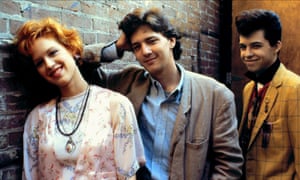
Molly Ringwald, Andrew McCarthy and Jon Cryer in Pretty in Pink. Photograph: Paramount/Sportsphoto Ltd/Allstar
Despite being well into his 30s by the time he started making teen movies, writer-director Hughes felt a deep connection with teenagers. “One of the great wonders of that age is your emotions are so open and raw. That’s why I stuck around that genre for so long,” he said. “At that age it feels as good to feel bad as it does to feel good.” He didn’t see young people as an easy way to make movies about young people taking off their clothes (a lifelong social conservative, Hughes’s teen movies are notably lacking in sex and drugs). Instead, he loved their emotions, and his first great teen movie, The Breakfast Club, is about just that: teens having emotions. But as great as The Breakfast Club is, there aren’t really any lessons learned here, except that parents suck and assistant principals suck harder, and this is why it is, ultimately, a teen movie, albeit one with bigger ambitions. It would take another year before Hughes wrote his great coming-of-age movie, directed by Howard Deutch, which, in turn, kicked off the run of the 80s’ three great coming-of-age movies, and probably the greatest movies of this type of all time: Pretty in Pink, Dirty Dancing and Say Anything.
The obvious common denominator to all of these films is that they are all largely about girls, a rarity then when coming-of-age movies were largely about the feelings of boys, and continue to be so now. Hughes unhesitatingly reversed this because of his friendship with Molly Ringwald, with whom he became fascinated ever since he came across her publicity photo and promptly wrote Sixteen Candles just for her.
Pretty in Pink, about a love triangle between open-hearted working-class kids Andie (Ringwald), Duckie (Jon Cryer) and angsty rich boy Blane (Andrew McCarthy), is his great platonic love letter to her, and what makes Pretty in Pink a great coming-of-age movie is it’s unexpected depths.
“When we were filming I remember thinking: ‘This is about a girl going to a dance? Seriously? Who’s going to want to see this?’” McCarthy told me, proving, rather pleasingly, that the actor was at least as limited in his perspective as his character Blane was. Because Pretty in Pink is about so much more than the prom; it’s largely about class, with Andie feeling self-conscious about her relative poverty at school, just as Hughes was when he was raised in a lower middle-class home in an upper middle-class neighbourhood. It’s also about the pointlessness of unrequited love, as illustrated primarily through Andie’s father, played heartbreakingly by Harry Dean Stanton, who warns Duckie against pursuing the clearly uninterested Andie. Most of all, it is about a girl realising that she is the star of her own story, and not a secondary character in some boy’s saga, and that she deserves to be treated well and be with the boy she wants. This last point was misunderstood by Hughes himself, who originally wrote the movie with Andie getting together with Duckie at the end, but audiences insisted she get with the boy she – and they – fancied. You can sense Hughes’s resentful half-hearted rewriting as Andie snogs Blane in the car park. But the kids, as ever, were right: Andie should be with the boy she actually likes, even if his name is Blane, which is, as Duckie rightly said, is the name of a kitchen appliance.
This was to be the last movie Ringwald and Hughes made together: after she turned down roles in Ferris Bueller’s Day Off and Some Kind of Wonderful, Hughes felt so betrayed that he abandoned teens entirely. “We were the Darling children when they made the decision to leave Neverland, and John was Peter Pan, warning us that if we left we could never come back,” Ringwald wrote after Hughes died in 2009. “[But] he went one step further. He did away with Neverland itself.”
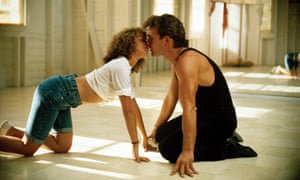
Jennifer Grey and Patrick Swazye in Dirty Dancing. Photograph: Allstar/Artisan
But Hughes’s followers kept his example alive; they just added the one ingredient missing from his movies: sex. Dirty Dancing was seen at the time as being a follow-up to Flashdance, with its sexy dancing and blockbuster soundtrack. But the intensity with which it tracks Baby’s (Jennifer Grey) emotions put it firmly in the Pretty in Pink tradition. Like Deutch and Hughes’s movie, Dirty Dancing is very much about social class, and how becoming aware of it is part of a young person’s awakening. But it is also clearly about sex, the most obvious way of coming of age, with Baby constantly staring at, dancing with, touching and, finally, sleeping with Johnny (Patrick Swayze). The whole movie is a celebration of female desire, but it also shows the danger of it through the character of Penny, who has to have an illegal abortion after getting impregnated by evil, Ayn Rand-reading waiter Robbie.
“When I wrote the film, abortion – like feminism – was one of those issues that people thought wasn’t relevant any more,” Eleanor Bergstein, Dirty Dancing’s screenwriter told me. “But I thought Roe v Wade was precarious, and my feeling is people who are anti-abortion are anti-sex and anti-pleasure for young women.”
Where Pretty in Pink uses the prom as the symbol for self-acceptance, Dirty Dancing depicts sex as a route to self-knowledge. Both movies took typical teen tropes and went much deeper with them than anyone had seen before. But it was the last great coming-of-age film of the decade that took the lessons of both and created something totally new.
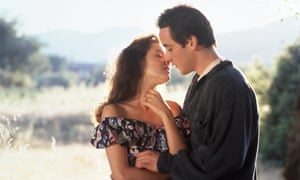
Ione Skye and John Cusack in Say Anything. Photograph: Allstar/20th Century Fox
Say Anythingis the most mature movie about teenagers ever made, and certainly the snappiest one ever written. Lloyd (John Cusack in his ultimate role) talks with the kind of irony other teen films would later copy (Clueless, most obviously), but director-screenwriter Cameron Crowe never lets the irony overshadow the heartfelt emotion. Like Pretty in Pink, it is about class and a girl finding herself, and like Dirty Dancing, it is very much about the role sex has in that. Yet Say Anything took it all to the next level: Diane Court (Ione Skye) doesn’t just grow away from her father (the late and much lamented John Mahoney); she literally gets him sent to jail. And when she loses her virginity (in the car, to Cusack, to Peter Gabriel – every sensible woman’s ultimate sexual fantasy) she, strikingly, is fine about it. Rather, it’s Lloyd who is emotionally altered by the experience. And that’s because Say Anything is, uniquely, as much about the boy as it is about the girl. And it is also about the parent. Where Pretty in Pink and Dirty Dancing hint at the sadness of Andie’s and Baby’s fathers, Say Anything really digs in there, showing Mr Court humiliated and shaking in a bathtub as he faces incarceration. This is a movie that encourages empathy across the gender and generational dividing lines. After all, realising that your parents are fallible, needy and scared is the ultimate coming-of-age experience.
The trick of the coming-of-age film is that it exceeds the expectations of the genre. Teen movies are great but even great ones can get away with focusing on the surface. With a coming-of-age movie you need to go deep, and if you fail you end up with Kevin “nothing was ever the same again” Arnold, Wonder Years-style schlock. Pretty in Pink should have been just a movie about a prom, Dirty Dancing a teen exploitation movie about dancing, and Say Anything a film about a nerd who gets the class princess. Instead, all three encompass bigger issues, and have emotional hooks that grip into the soul, which is why they are still so beloved 30 years on.
“When you grow up, your heart dies,” as a John Hughes character famously once said. But the coming-of-age movie shows that not only does your heart keep beating as you enter into adulthood, but adults who watch these films will find that it is also still capable of breaking.
Three more coming-of-age classics
Lady Bird
Greta Gerwig, 2017
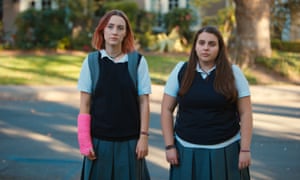
Saoirse Ronan and Beanie Feldstein in Lady Bird. Photograph: Merie Wallace/AP
In Gerwig’s charming, witty, autobiographically informed directorial debut, Saoirse Ronan’s eponymous, hormonal heroine is bursting to live, live, live … just as soon as she can get far away from Catholic girls’ school, her “soul-killing” home town and her tightly wound mother (Laurie Metcalf, priceless). This has all the requisite schoolgirl drama beats, from ditching the BFF to disappointing first love, but quirkily rendered at a smart pace while Lady Bird’s energy and ambitions exceed everyone’s low expectations of her. So many delights: the cringe-making embarrassments of someone desperate to be different; witty fights with Mom; fumbling sexual overtures; the life wisdom of learning that you love what you’ve left behind; and just everything to like about her prom night.
Angie Errigo
Reality Bites
Ben Stiller, 1994
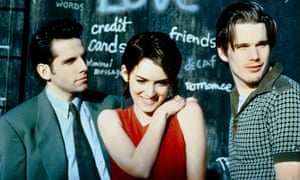
Ben Stiller, Winona Ryder and Ethan Hawke in Reality Bites. Photograph: Moviestore/REX
The “Muh muh muh my Sharona” moment is the bounciest titbit in Ben Stiller’s smartarse directorial debut, a Generation X bildungsroman in which recent college graduates in a job-poor market try to find themselves and “be something by the age of 23”. Winona Ryder is driven and intense as aspiring documentary-maker Lelaina, torn between Slacker Without a Cause housemate Troy (Ethan Hawke, terrifically arcing from boorish languor to lovable vulnerability) and cable executive Michael (Stiller), who obvs must be the disposable beau because he wears suits and works for a crass corporation. A pity her actual documentary footage is pants, but this is a 90s pop-culture time capsule with a little ironic social comment and spot-on performances. AE
The Breakfast Club
John Hughes, 1985
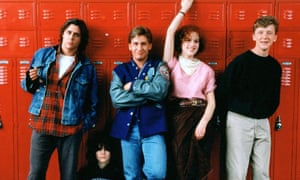
Judd Nelson, Ally Sheedy, Emilio Estevez, Molly Ringwald and Anthony Michael Hall in The Breakfast Club. Photograph: Allstar/Universal Pictures
What do the Princess, Athlete, Brain, Basket Case and Criminal have in common? They all hate their parents, naturally! John Hughes’s defining 80s teen flick has the archetypal five, seemingly disparate, miscreants (a Junior All-Stars cast of its time including Molly Ringwald, Ally Sheedy and Emilio Estevez) serving Saturday detention in the high-school library, where bickering, bullying and, eventually, bonding occur. Once they become sufficiently bored to talk to each other, and to listen, Hughes’s great ear for the way teens talk makes their hang-ups and truths – however predictable, although it’s always a shock which kid is there for bringing a gun to school – into a classic of self-discovery and understanding. AE
Sign up for Film Today and get our film team’s highlights of the day
Comments
Post a Comment